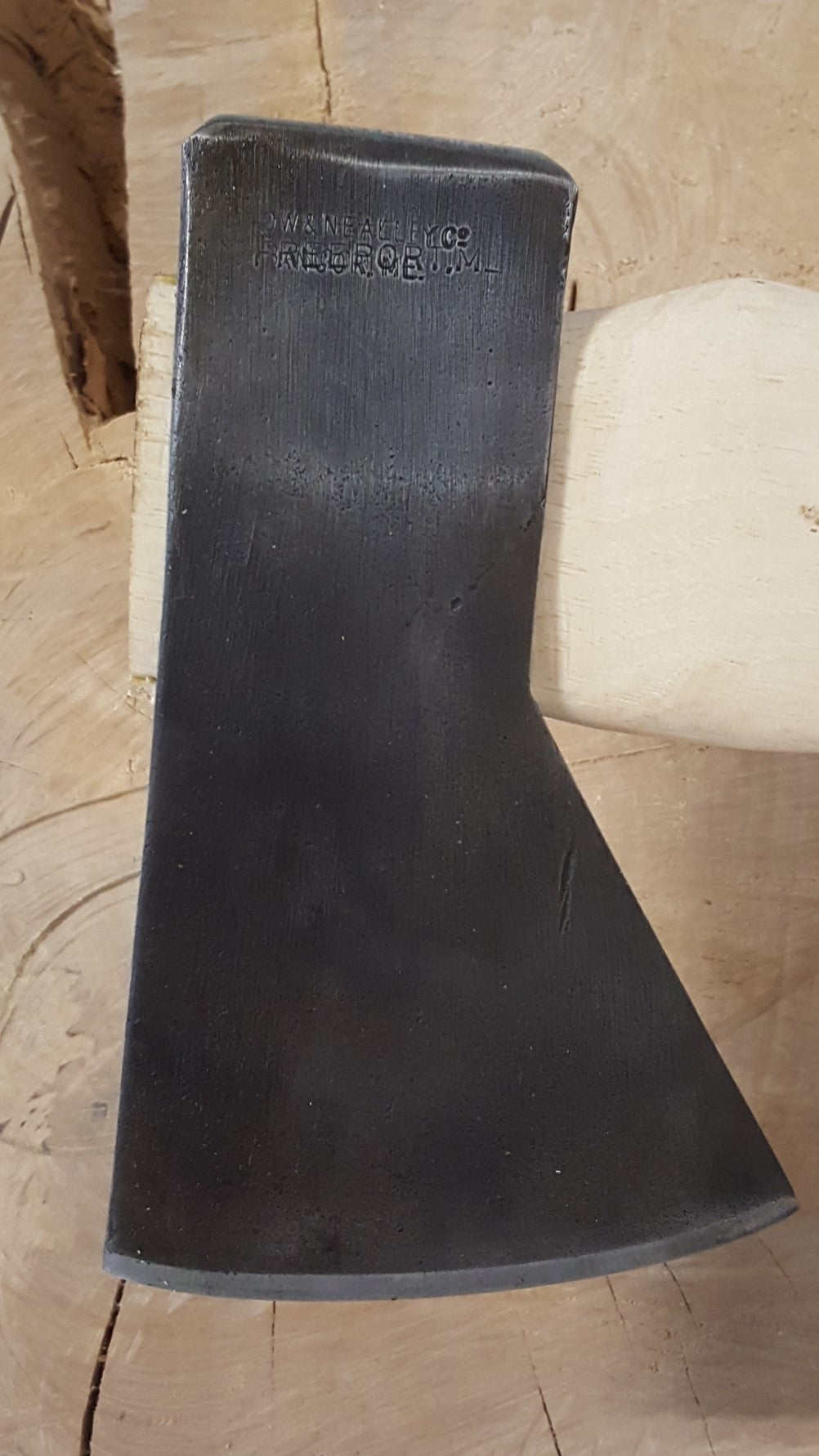When we went on canoe trips in Minnesota's Boundary Waters one of the things our outfitter (Sawbill Canoe Outfitters) put into our packs was a Hudson's Bay axe. This axe was a familiar tool for all the voyageurs, trappers, hunters, and later recreational canoeists heading into the North woods. This axe could also be considered the "missing link" between the poll axe used to fell trees in our hardwood forests and the poll-less trade axe in use in the Americas since the 1600s.
Hudson Bay axes are known by their roughly 2-pound weight, tear drop shaped eye, flat poll and swept back design. These axes were usually hung on a 20"- 28" handle. Earlier trade axes had no poll as the metal was wrapped around the handle.

They get their name from the Hudson's Bay Company which dominated the fur trade in the Americas almost from the time it received its royal charter in 1670 until the trade subsided in the late 1800s.
Crest of the Hudson's Bay Co - Pro Pelle Cutem = "Skin For Leather"
These axes were used not only by the voyageurs themselves when plying their trade in the North Woods, but also as traded with the Native Americans for beaver furs to make hats for the well-heeled in Europe.
The popularity of the Hudson Bay pattern continued even as the fur trade died out. Companies such as Norlund, Snow & Nealley (the axe in the pictures above), and Collins all made a version of the Hudson's Bay axe.
Next we'll explore the evolution of the American felling axe . . .

